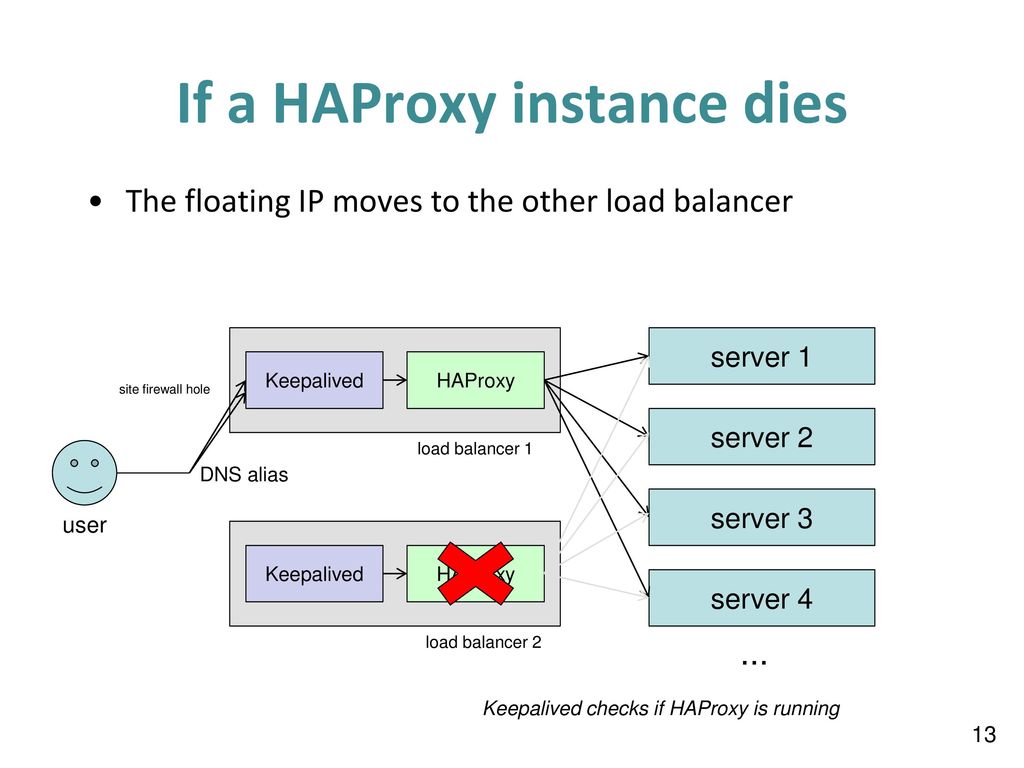
Load Balancing Without a Floating IP: Achieving HA with HAProxy, Keepalived, and Dynamic DNS
High availability (HA) is a critical component of modern IT infrastructure, ensuring minimal service disruption and maintaining business continuity. In this post, we’ll unveil a robust HA setup using HAProxy and Keepalived, with the assistance of Dynamic DNS for seamless failover, all without the need for a floating IP.
The Python Script for Dynamic DNS Update
When the active load balancer fails, updating the DNS record to reflect the secondary LB’s IP is crucial. Here is the Python script that automates the update:
import sys
import requests
# Configuration parameters
api_endpoint = "https://dynamicdns.provider.com/update"
api_token = "your_api_token"
record_name = "lb.example.com"
record_type = "A"
new_ip = "secondary_lb_ip_address"
# Function to update the DNS record
def update_dns_record():
data = {
"token": api_token,
"record": record_name,
"type": record_type,
"value": new_ip
}
try:
response = requests.post(api_endpoint, data=data)
response.raise_for_status()
print(f"DNS record updated successfully: {record_name} IN {record_type} {new_ip}")
except requests.exceptions.RequestException as e:
print(f"Failed to update DNS record: {e}")
if __name__ == "__main__":
if len(sys.argv) >= 2 and sys.argv[1] == "MASTER":
update_dns_record()
Keepalived Configuration
Keepalived manages failover and ensures high availability of services. Here’s a snippet of both multicast and unicast configurations in the keepalived.conf file.
Multicast Configuration on LB1:
vrrp_instance VI_1 {
state MASTER
interface eth0
virtual_router_id 51
priority 100
virtual_ipaddress {
192.168.0.100
}
}
Unicast Configuration on LB1:
vrrp_instance VI_1 {
state MASTER
interface eth0
virtual_router_id 51
priority 100
unicast_src_ip LB1_PRIVATE_IP
unicast_peer {
LB2_PRIVATE_IP
}
virtual_ipaddress {
192.168.0.100
}
}
Replace LB1_PRIVATE_IP and LB2_PRIVATE_IP with the appropriate IP addresses.
Multicast vs. Unicast
Multicast: Used in L2 broadcast domains; easier setup; less configuration.
Unicast: Can operate across subnets and over the internet; requires explicit peer IPs; more complex setup but greater flexibility.
Summary
Achieving high availability for load balancers without a floating IP is entirely feasible. By combining HAProxy with Keepalived and Dynamic DNS, we create a resilient environment that can quickly adapt to outages by dynamically updating DNS records. The choice between multicast and unicast depends on your network infrastructure and specific needs, but both can be effectively used to maintain continuous service availability.